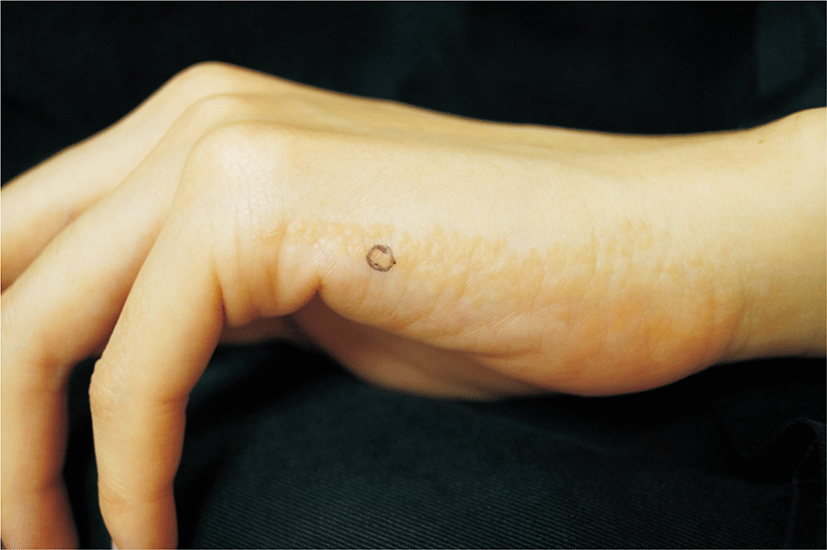A 29-year-old woman presented with skin lesions on both hands lasted for 1 year. Her past and family history were unremarkable. On skin examination, there were multiple asymptomatic yellow flat discrete papules and plaques along the lateral aspect of both hands (Fig. 1). Skin biopsy revealed focally depressed epidermis with marked hyperkeratosis and hypergranulosis (Fig. 2A). Elastic fiber stain showed normal elastic fibers (Fig. 2B). Based on clinical and histologic findings, the diagnosis of focal acral hyperkeratosis (FAH) was made. The patient was prescribed with topical retinoids and topical keratolytics and showed limited improvement.
FAH is a type of palmoplantar keratoderma, characterized by abnormal thickening of the palms and soles. It occurs both sporadically and as an autosomal dominant genodermatosis. Clinically, multiple skin colored to yellow papules and plaques are localized to the margins of the hands and feet. Histologically, it shows a pronounced hyperkeratosis over a crateriform epidermal depression without dermal change [1,2].
FAH is often considered to be a variant of acrokeratoelastoidosis, although their relationship is controversial. The differential diagnosis with acrokeratoelastoidosis can be made by the absence of elastorrhexis in FAH [1].
Clinically, FAH should be differentiated from verruca vulgaris, but the absence of koilocytes and parakeratosis on histopathologic examination disapproved the possibility of verruca vulgaris in this case.
FAH is a benign condition, yet there is no effective treatment for FAH. Conservative treatment can be tried since this condition is potentially disfiguring. Topical keratolytics, topical retinoids and systemic retinoids are prescribed to decrease hyperkeratosis and relieve symptoms [2,3].

